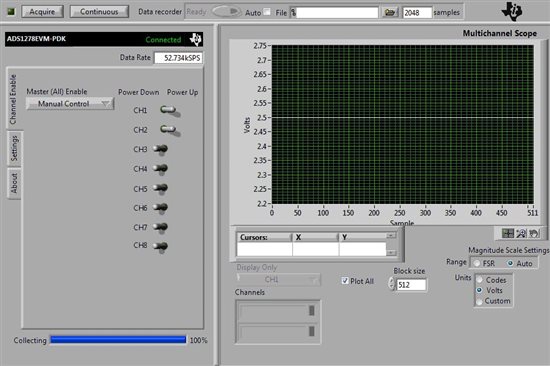Hi,
I am in the middle of designing a Data acquisition system ADS 1278 seems perfectly fit. So I bought the evaluation board and try to feed a differential input via an external THS 4520 FDA (which converted my single supply to differential). But the channels having the buffer/anti aliasing filter filter is not working properly, as I am not getting any output even though I have changed the switches to the buffer. I tried with directly feeding single ended supply through these channels, yet not getting anything. But from Channel 5 to 8 I am getting perfect output. What could be the problem? I did not find any jumper issue, may be I am unaware also, please help me.
Second issue is, I tried to get a gain of 10 by changing the FDA circuit by changing the resistors (of channel 2), but I did not get anything at out put of THS 4521 on EVL board. I have not take onut the 1.5nF capacitor. I believe its a Low pass filter with a cut off around 1KHZ. I used a low frequency signal below 500 hz but i could not get anything at the output across the resistor R23 or output pin of the amplifier. I used a single ended supply with source resistance 50ohm(function generator). Would that be a problem? I was getting not anything even a unbalanced one.
Third, I am trying to convert a strain gauge signal which is a bridge of 350 ohm which has an output as low as less than 1mv. I need a gain approximately near 1000 before feeding to ADS 1278. I dont have a instrumentation amplifier. If the first and second problem is solved, is it a crazy idea to use two or three FDA's in the EVL board with gain 10 each and get an output equivalent to 1000 by cascading one other and feeding to another channel to get an output .?


